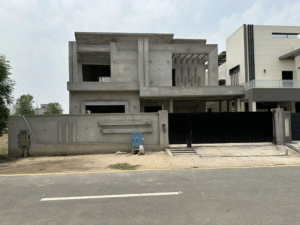
In the competitive and high-stakes realm of commercial construction, precision in cost planning and material forecasting is non-negotiable. Projects such as office buildings, retail complexes, hospitality venues, educational institutions, healthcare centers, and industrial facilities all require extensive financial foresight. This is where Commercial Estimating Services play a pivotal role.
These services help general contractors, developers, architects, and subcontractors secure profitable projects and avoid the financial pitfalls that come with underestimating or overestimating. By providing detailed cost breakdowns, takeoffs, and analysis, commercial estimators allow stakeholders to make informed decisions at every stage—from conceptual budgeting to final bid submission.
What Are Commercial Estimating Services?
Commercial estimating services involve the systematic and detailed quantification of materials, labor, equipment, and overhead costs associated with constructing commercial buildings. These services are designed to provide:
- Accurate quantity takeoffs
- Detailed labor and material costs
- Phased cost breakdowns
- Cash flow projections
- Value engineering insights
Whether the project is a new construction, renovation, fit-out, or an expansion, commercial estimators review drawings, specifications, and scope documents to produce comprehensive reports that reflect current market rates and localized labor pricing.
Key Elements Covered in Commercial Estimating
Every commercial project is different in design, function, and complexity. However, the estimation process typically includes the following core elements:
1. Sitework and Earthwork
- Excavation, grading, and site clearing
- Retaining walls, sidewalks, and parking lots
- Utilities, drainage systems, and landscaping
2. Concrete Work
- Foundations, slabs, footings, and curbs
- Reinforcement steel (rebar)
- Formwork, concrete pumping, and finishing
3. Structural Components
- Structural steel framing, connections, and bracing
- Wood framing for light commercial structures
- Load-bearing walls and masonry
4. Envelope Systems
- Roofing (TPO, EPDM, metal roofing)
- Cladding systems, EIFS, and brick veneer
- Insulation, vapor barriers, and waterproofing
- Windows, storefront systems, curtain walls
5. Interior Construction
- Partitions (drywall, demountable systems)
- Ceilings (ACT, GWB, specialty ceilings)
- Doors, frames, and hardware
- Finish carpentry and millwork
- Painting and coatings
- Flooring systems (VCT, tile, carpet, polished concrete)
6. Mechanical, Electrical, Plumbing (MEP)
- HVAC systems (RTUs, ductwork, thermostats)
- Plumbing rough-ins, water heaters, and fixtures
- Electrical wiring, lighting, switchgear, and fire alarm
7. Specialty Systems
- Elevators, escalators, and conveyance systems
- Fire suppression and sprinkler systems
- Security and access control systems
- Data and communication infrastructure
8. General Conditions and Overhead
- Temporary utilities
- Site office trailers and fencing
- Waste management and cleanup
- Bonds, insurance, and permits
This holistic approach ensures that every trade and discipline is included in the commercial estimate, creating a reliable foundation for budgeting and bidding.
Importance of Commercial Estimating in Construction
Inaccurate estimating is one of the top reasons construction companies lose profits. With shrinking margins and aggressive competition, a small miscalculation in a commercial estimate can lead to thousands—or even millions—of dollars in unanticipated costs. Here’s why precise commercial estimating is critical:
- Improved Bid Accuracy: Prevents underbidding that results in losses and overbidding that loses opportunities.
- Better Project Planning: Helps project managers prepare budgets, cash flow forecasts, and procurement schedules.
- Mitigates Risk: Identifies potential cost overruns before they occur, reducing financial exposure.
- Supports Value Engineering: Enables the evaluation of alternate materials or construction methods without sacrificing performance.
- Enhances Profitability: Ensures every aspect of the job is covered, increasing confidence in your numbers.
For large-scale commercial developments, estimation errors don’t just impact the bottom line—they can derail timelines, damage reputations, and jeopardize investor relationships.
Estimating for Various Commercial Sectors
Commercial estimating services must adapt to a wide range of industry-specific requirements. Estimators familiar with each sector’s codes, typical specs, and unique challenges are more likely to produce reliable results.
🏢 Office Buildings
- Core and shell construction
- Open floor plans and modular fit-outs
- High-spec finishes for executive spaces
🏬 Retail & Shopping Centers
- Mixed-use layouts
- Tenant improvements and shell-only designs
- Extensive storefront glass and signage
🏨 Hospitality (Hotels & Restaurants)
- Kitchens, food prep, and refrigeration systems
- Interior finishes for lobbies, suites, and spas
- MEP systems with complex zoning
🏥 Healthcare Facilities
- Medical gas systems and clean rooms
- Specialized HVAC and infection control zones
- ADA-compliant and highly regulated structures
🏫 Schools & Universities
- Lecture halls, gymnasiums, and libraries
- Heavy-duty flooring and acoustic insulation
- Fireproofing and mass-evacuation systems
🏭 Industrial Buildings & Warehouses
- Structural steel warehouses and tilt-up construction
- Loading docks and overhead door systems
- Sprinkler and fireproofing systems
Each sector requires experienced estimators who understand not just pricing, but compliance, workflow, and end-user functionality.
Process of Commercial Estimating Services
The process of estimating for commercial construction projects is both technical and methodical. Below is a typical workflow followed by professional estimators:
1. Project Review
- Analyze architectural, structural, and MEP drawings
- Review specifications, addenda, and scope documents
2. Quantity Takeoff
- Use takeoff software to measure linear, square, and cubic quantities
- Break items down by floor, phase, or area of work
3. Cost Application
- Apply unit costs for materials and labor
- Factor in equipment rentals, logistics, and subcontractor quotes
4. Report Compilation
- Provide a CSI-divided or trade-specific breakdown
- Summarize direct costs, indirect costs, and profit margins
5. Review and Adjustment
- Cross-verify with similar projects
- Adjust for inflation, location, seasonality, and escalation
This structured methodology ensures the estimates are clear, well-documented, and tailored to the unique aspects of the job.
Technology Used in Commercial Estimating
Today’s commercial estimators rely on advanced software and data to produce consistent and reliable results. Some of the most widely used tools include:
- Bluebeam Revu – For PDF markups and quantity takeoffs
- PlanSwift – For fast, point-and-click takeoffs
- Sage Estimating – For integration with accounting and job costing
- STACK – Cloud-based takeoff and estimating platform
- Trimble, RSMeans, and CostWorks – For national cost databases and benchmarks
These tools increase efficiency, reduce human error, and allow teams to collaborate in real time.
Benefits of Outsourcing Commercial Estimating
For many contractors and developers, outsourcing estimating services is a smart business decision. It offers:
- Scalability – Handle multiple bids or large projects without expanding in-house staff
- Speed – Faster turnaround on bids with dedicated resources
- Expertise – Access to specialized estimators with experience in multiple trades
- Cost-Effectiveness – Avoid payroll, software, and overhead expenses tied to a full-time estimator
- Bid Volume Increase – Submit more bids without sacrificing quality
This flexibility enables contractors to stay competitive without overcommitting internal resources.
Conclusion
Commercial estimating is the bedrock of a successful construction project. With razor-thin margins and high expectations from stakeholders, there’s no room for guesswork or oversights. Whether you’re a general contractor bidding on a new high-rise or a subcontractor pricing out a tenant improvement, precise commercial estimating ensures your numbers are solid, your bids are competitive, and your projects are profitable.
From pre-construction budgeting to final bid submissions, Commercial Estimating Services bring structure, clarity, and confidence to your construction operations. In an industry where every dollar and detail matters, having a reliable estimator is more than a convenience—it’s a necessity.




